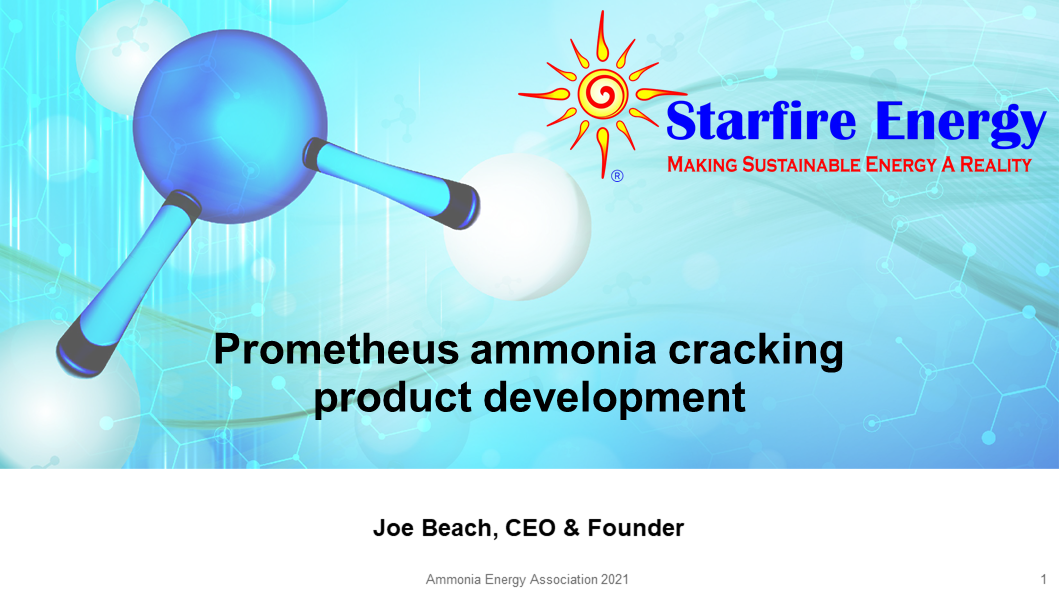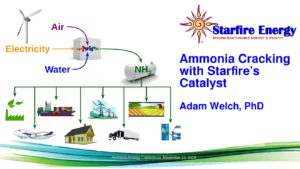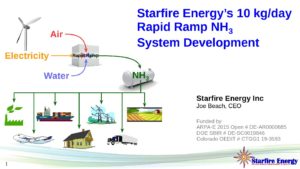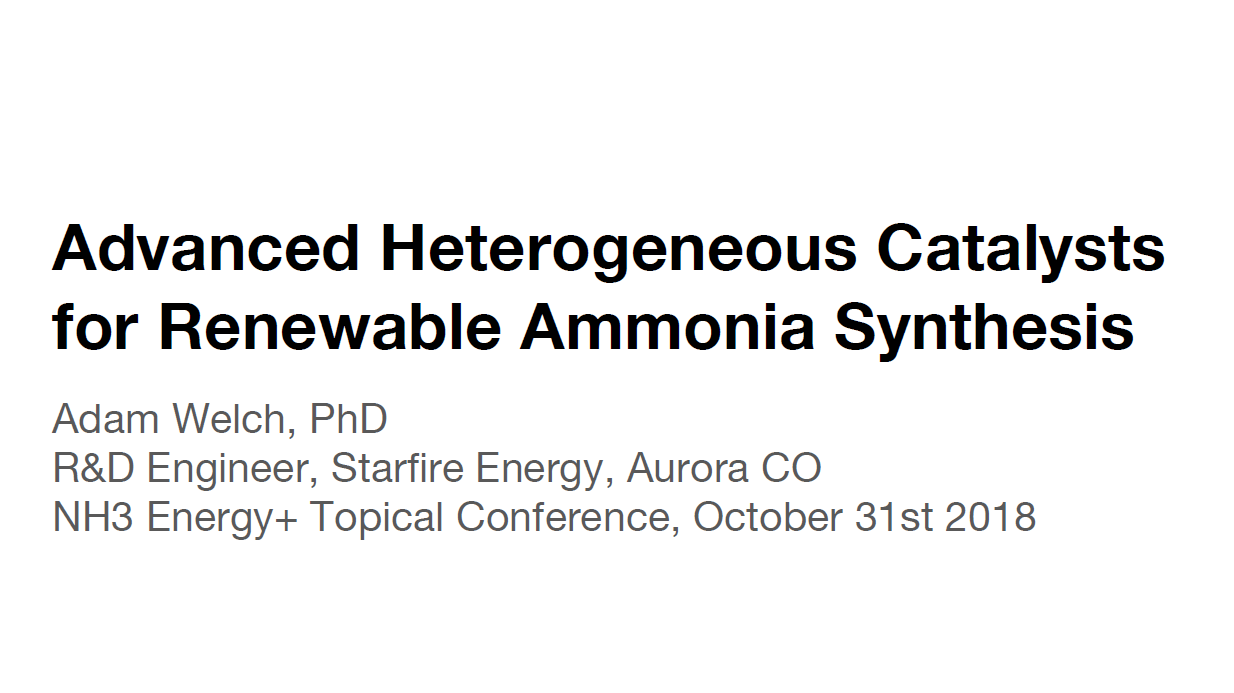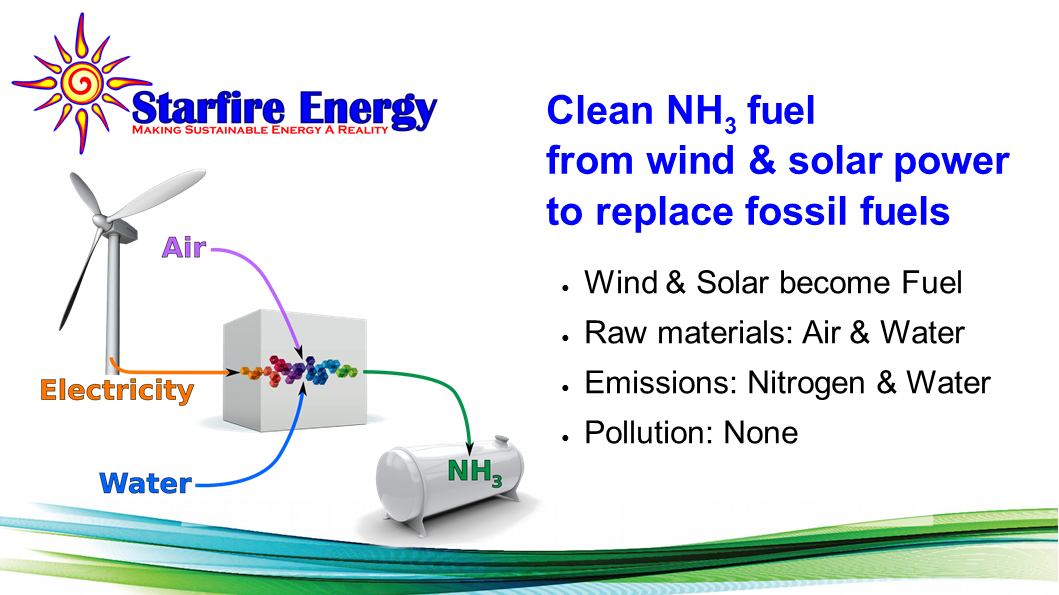Presentation
Starfire Energy's Prometheus ammonia cracking technology
The lowest cost way to use ammonia as a fuel is as an intact NH3 molecule. However, its slow flame speed can cause challenges managing flame stability, ammonia slip, and nitrogen oxide formation. Some fuel cells also require hydrogen, rather than ammonia. Ammonia cracking can solve these problems by providing either a NH3 + H2 + N2 blend or, with appropriate processing, pure hydrogen. Starfire Energy’s Prometheus cracking technology is a unique approach that uses an oxide catalyst bonded to a metal foil substrate. It provides excellent opportunities to power the cracking reaction with both waste combustion heat or purpose-generated…
